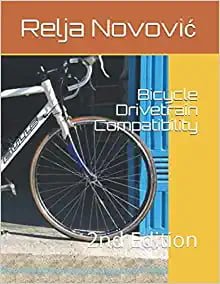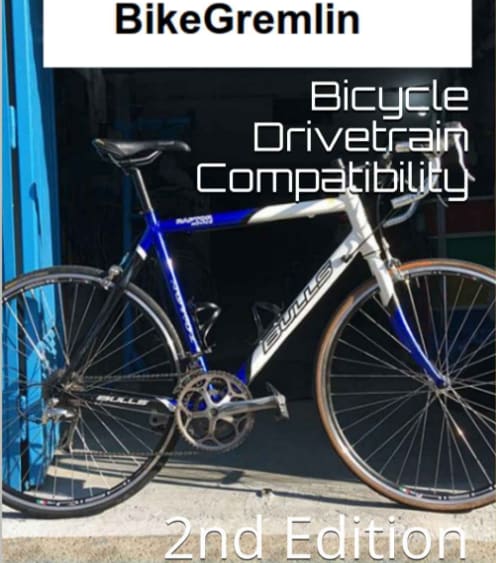This is the first in a series of compatibility posts, explaining: combining various different bicycle parts – what can be combined with what so that it works fine.
TL/DR
Shimano (and other manufacturers) aim to protect themselves and increase profits.
That’s why their official compatibility charts are very conservative. In practice, this means:
- If they say something is compatible – it really is.
- But if they say something isn’t, it might still work just fine.
This series of guides is based on hands-on testing, measurements, and experience, and was made to help you understand what combinations actually work — not just what’s officially listed.
There are various standards for bicycle parts. 6, 10, or 13 sprockets at the back, road, MTB shifters etc. There are also different manufacturers’ standards. When replacing a part, or when putting a new bicycle together, people often don’t have at their disposal the same series of the same part manufacturer.
This series of posts explains what parts can be combined with what. This first post will define problems that occur when combining different equipment, and give you instructions on how to use my compatibility articles series. Following posts explain possible combinations (and tweaks to make them work) of chains, cassettes, shifters, brakes etc.
Another great resource for compatibility:
https://docs.google.com/spreadsheets/d/16C3Rz6qmzmurSNd-L3IeMSFukkBFV6D1DRbfS59EDrE/
1. Equipment manufacturers and their standards
There are three greatest bicycle quipment manufacturers. Shimano (Japanese), SRAM (USA) and Campagnolo (Italian). The rest of aftermarket producers build equipment to suit one of those three greatest manufacturer’s standards. Shimano is the widest spread and most producers tend to fit Shimano standards, but the other two producers are also widely available.
Campagnolo makes road bicycle parts, while Shimano and SRAM make both road and MTB parts. Shimano and SRAM are a lot more compatible with each other, than with Campagnolo.
2. Differences that cause problems when mix-matching
Equipment standards vary depending on use. It is not the same for road and MTB equipment. Also, things like the number of “speeds” – i.e. number of cogs at the rear – often cause differences in standards. Number of cogs at the rear varies from 6, 7… to 12. This is often referred to as 6 speed, 7 speed and so on.
How do things get complicated? Shimano 10 speed MTB and Road rear derailleurs are not the same and will not work if mixed. Similarly, 10 speed road cassettes made by Shimano and Campagnolo can not be mixed. And so on…
However, there are a lot of combinations that work well together. Some with minor modifications, and others bolt on – without any problems. This series of articles will give info on what mixes with what.
3. What to consider
When checking for compatibility, pay attention to and note the following things:
- Is it a MTB or road equipment
- Number of chainrings at the front and at the back
- Do cables reach front derailleur from the top, or from the bottom bracket
- Type (model) and make of equipment currently on the bicycle
- Type of brakes (disc, or rim)
- What is the rear hub like, what is the cassette attachment like
- At last, but not the least important, frame itself dictates limitations on what equipment can be mounted on the bicycle
Manufacturers’ tables and recommendations are often too conservative, but it is good to know exactly what kind of equipment is on the bike when planning to pair it with equipment of other manufacturers, or with a different series of the same manufacturer’s equipment.
Compatibility combinations that will be given in following posts are just guidelines. There are many various factors that differ one bicycle/component from the other and the only way to be 100% sure is either to try, or to find an exact matching manufacturer/component series. That is why some combinations will work as well as “the original”, while the same combination on another bicycle will not work perfectly.
4. Instructions for using the compatibility posts series
Each post deals with one type of equipment (i.e. rear shifter, front shifter, cassette etc.). It should be noted which parts replacement is planned and read their compatibility in an appropriate post. For example: if a rear derailleur is to be replaced, post about compatibility of rear derailleurs explains which shifters and cassettes a derailleur can work with. If both the rear shifter and derailleur need to be changed, one should first find a shifter that matches the number and type of cassette sprockets, then find a matching derailleur. Or vice-versa: first find a derailleur, then a matching shifter. Parts that interact with each other usually must be chosen in such one-by-one manner, or a matching combination will be impossible to find.
This is important to have in mind when mix-matching. Now you are ready to dive into the compatibility articles. 🙂
Compatibility posts are also available in eBook (printable and Kindle) and paperback editions on Amazon:

Last updated:
Originally published:

